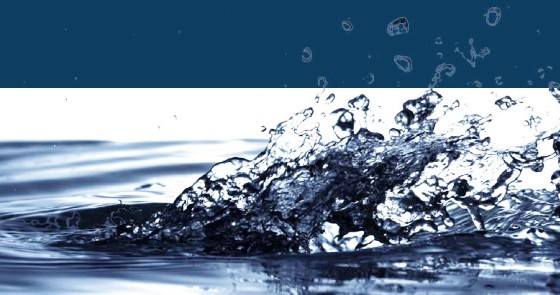by | Samihah Zura
People keep assuming that drinking water is just for hydration purposes, thirst, and detoxification etc. Water however is not just H2O but a nutrition source. Drinking water that has rich nutrient content is definitely a good choice. There are many kinds of water available such as mineral water, ionized water, reverse osmosis water, alkaline water and the healthy water known as Zam-Zam water. Research on the production of various kinds of drinking water for health benefits leads to the discovery of deep sea water (DSW). DSW contains mineral ions including magnesium (Mg), calcium (Ca), potassium (K), chromium (Cr), selenium (Se), zinc (Zn), and vanadium (V) that are essential to our bodies1,2. DSW contains lots of minerals because it has been subjected to less photosynthesis in plant planktons, less consumption of nutrients, and much organic decomposition that releases lots of nutrients to the immediate environment. Deep sea drinking water (DSDW) is currently produced in many countries, Japan, Taiwan, South Korea and USA.1,2,3,4 through the process of desalination to remove its high salts concentrations. Blending of minerals (originated from DSW) is a common method used to restore the minerals in DSDW.
The most promising benefits attained from the intake of DSDW include its ability to improve cholesterol profiles in the serum and liver. DSDW can reduce triglyceride (TG), non-high-density lipoprotein cholesterol (non-HDL-C) levels, and total cholesterol (TC) in the serum and liver of animal models 3,5,6,7. Drinking water made from DSW in Japan contains Magnesium (600 and 1000 ppm) in the socalled “Amami no Mizu” bottled water which decreases cholesterol by 18% to 15%8. Interestingly, a study of DSDW consumption in hypercholesterolemic individuals shows that DSDW can reduce TC, LDL and decreased lipid peroxidation. Furthermore, treatment with DSDW can help prevent the atherogenesis process (the formation of plaque in the inner lining of an artery, which deposits fatty substances, cholesterol, and other substances) 3, 9. DSDW can reduce body weight 2,10; improve cardiovascular hemodynamics and lower the blood pressure 1,3,6; improve glucose intolerance and suppress hyperglycemia which indicates a possibility to treat diabetic problems11. DSDW can also treat skin problems. In the study of patients with atopic eczema/dermatitis syndrome (AEDS) who were treated with DSDW, the improvement of skin symptoms such as inflammation, lichenification, and cracking in skin were observed 12. In another study, intake of DSDW has reduced allergic skin responses and serum levels of total IgE, Japanese cedar pollenspecific lgE, in patients with allergic rhinitis.
References
1. S.-I. Katsuda, T. Yasukawa, K. Nakagawa, M. Miyake, M. Yamasaki, K. Katahira, M. Mohri, T. Shimizu, and A. Hazama, “Deep-sea water improves cardiovascular hemodynamics in Kurosawa and KusanagiHypercholesterolemic (KHC) rabbits.,” Biol. Pharm. Bull., vol. 31, no. 1, pp. 38–44, Jan. 2008
2. H. S. Hwang, H. A. Kim, S. H. Lee, and J. W. Yun, “Anti-obesity and antidiabetic effects of deep sea water on ob/ob mice.,” Mar. Biotechnol. (NY)., vol. 11, no. 4, pp. 531–9, 2009.
3. M.-J. Sheu, P.-Y. Chou, W.-H. Lin, C.-H. Pan, Y.-C. Chien, Y.-L. Chung, F.-C. Liu, and C.-H. Wu, “Deep Sea Water Modulates Blood Pressure and Exhibits Hypolipidemic Effects via the AMPK-ACC Pathway: An in Vivo Study.,” Mar. Drugs, vol. 11, no. 6, pp. 2183–202, Jun. 2013.
4. S. Ueshima, H. Fukao, K. Okada, and O. Matsuo, “Suppression of the release of type-1 plasminogen acti v ator inhibitor from human v ascular endothelial cells by Hawaii deep sea water,” vol. 9, pp. 103–109, 2003.
5. Z.-Y. Fu, F. Lo Yang, H.-W. Hsu, and Y.-F. Lu, “Drinking Deep Seawater Decreases Serum Total and Low-Density Lipoprotein–Cholesterol in Hypercholesterolemic Subjects,” J. Med. Food, vol. 15, no. 6, pp. 535–541, Jun. 2012.
6. M.-H. Chang, BOR-SHOW TZANG, T.-Y. YANG, Y.-C. HSIAO, H.-C. YANG, and and Y.-C. CHEN, “Effects of DeepSeawater on Blood Lipids and Pressure in High-Cholesterol Dietary Mice,” J. Food Biochem., vol. 35, no. 1, pp. 241–259, Feb. 2011.
7. S. Yoshioka, A. Hamada, T. Cui, J. Yokota, S. Yamamoto, M. Kusunose, M. Miyamura, S. Kyotani, R. Kaneda, Y. Tsutsui, K. Odani, I. Odani, and Y. Nishioka, “Pharmacological activity of deep-sea water: examination of hyperlipemia prevention and medical treatment effect.,” Biol. Pharm. Bull., vol. 26, no. 11, pp. 1552–1559, 2003.
8. T. T. M. Kimura, H. Tai, K. Nakagawa, Y. Yokoyama, Y. Ikegami, “Effect of drinking water without salt made from deep sea water in lipid metabolism of rats,” Ocean. ’04 MTS/IEEE Techno-Ocean ‘04 (IEEE Cat. No.04CH37600), vol. 1, pp. 320–322, 2004.
9. M. Miyamura, S. Yoshioka, A. Hamada, D. Takuma, J. Yokota, M. Kusunose, S. Kyotani, H. Kawakita, K. Odani, Y. Tsutsui, and Y. Nishioka, “Difference between deep seawater and surface seawater in the preventive effect of atherosclerosis.,” Biol. Pharm. Bull., vol. 27, no. 11, pp. 1784–7, Nov. 2004
10. B. G. Ha, E. J. Shin, J.-E. Park, and Y. H. Shon, “Anti-diabetic effect of balanced deep-sea water and its mode of action in high-fat diet induced diabetic mice.,” Mar. Drugs, vol. 11, pp. 4193–212, 2013.
11. Y. Hataguchi, H. Tai, H. Nakajima, and H. Kimata, “SHORT COMMUNICATION Drinking deep-sea water restores mineral imbalance in atopic eczema / dermatitis syndrome,” pp. 1093–1096, 2005.
12. H. Kimata, H. Tai, and H. Nakajima, “Reduction of Allergic Skin Responses and Serum Allergen-Specific IgE and IgEInducing Cytokines by Drinking Deep-Sea Water in Patients with Allergic Rhinitis,” Oto-Rhino-Laryngologia Nov., vol. 11, no. 6, pp. 302–303, 2001.










